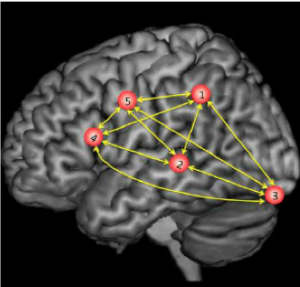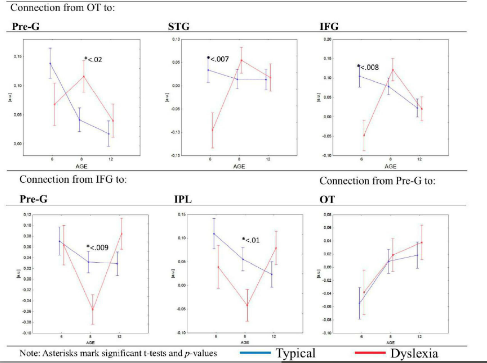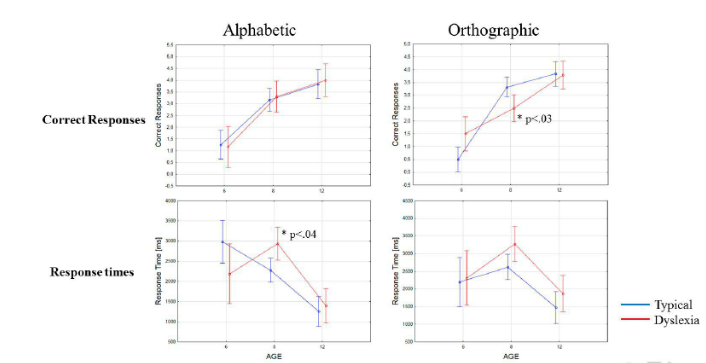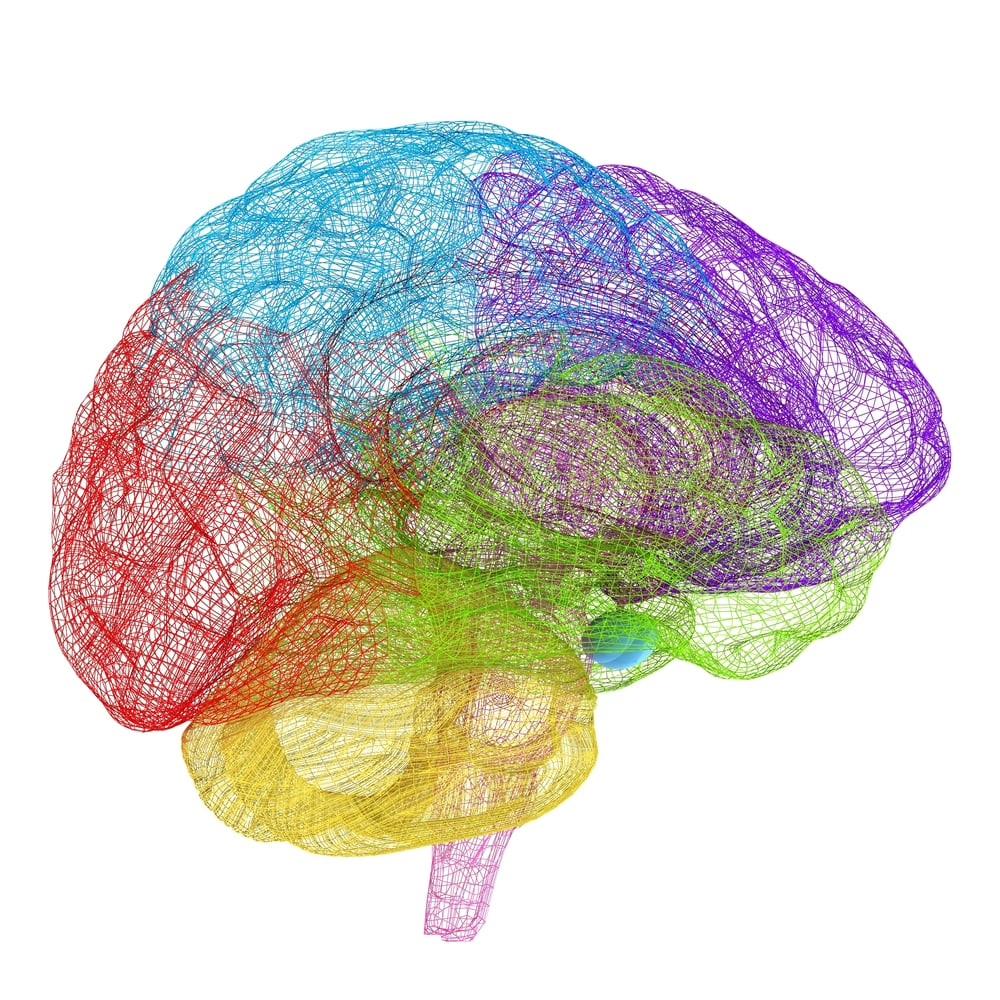In a report from NeuroImage, researchers reported a different pattern of connectivity as children matured from pre-readers (6 years) to emerging readers (8 years) to readers (12 years). This study provides additional evidence that dyslexic children’s path to literacy is neither a simple delay of the neurotypical pattern nor a reduced pattern of connectivity.

TAKE-HOMES:
* Dyslexia is not simply delayed non-dyslexic development
* Stronger visual connections and weaker phonological connections in 8 year olds
* Connectivity patterns are the same by age 12, but speed of processing is different.
A brief visual summary of their finding :

The interesting thing to us is that although the connections of dyslexic subjects end up at the same level (or higher!) than non-dyslexics by age 12, there are dramatic differences at age 8.
At age 8, inferior frontal gyrus (phonological processing) shows fewer connections in dyslexic students, compared to the occipital temporal cortex (‘visual word form area’) where dyslexic connections are greater at age 8.
Looking at the graphics, it’s not hard to imagine the hard work that 8 year old dyslexics are undergoing while developing their reading skills and why students need more time. Below are the article’s results with reading accuracy and response times.

Although the 12 year old dyslexic students had matched the single word reading accuracy of non-dyslexics, they still were a bit slower (stealth dyslexic?), supporting the need for more time. The study also showed higher connectivity into visual areas (OT) at age 8 perhaps indicating why some individuals crack the code for reading by visually memorizing shapes.
















